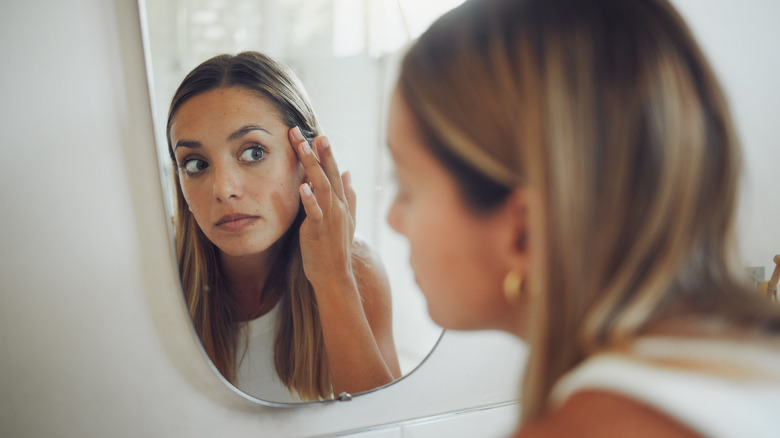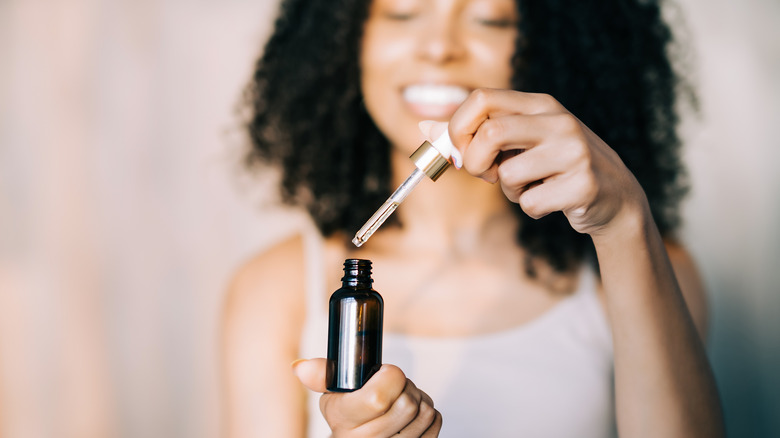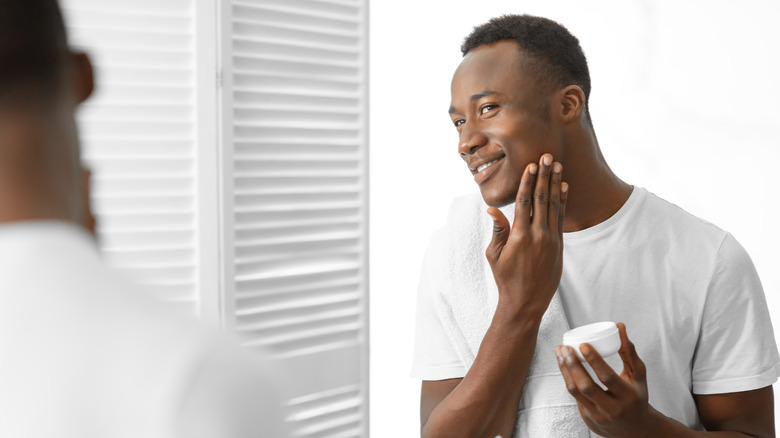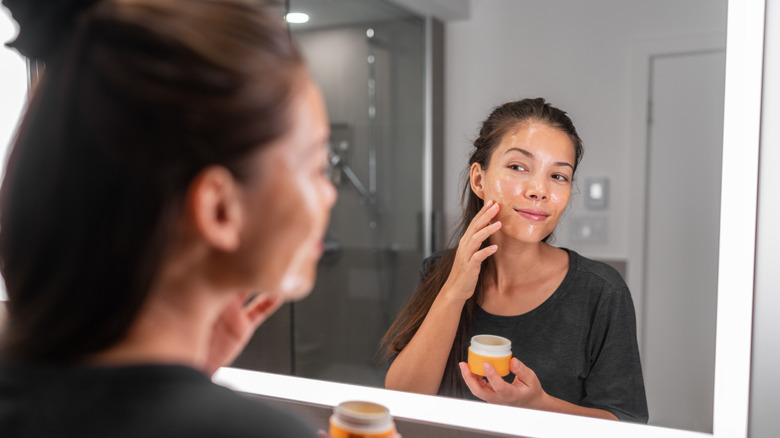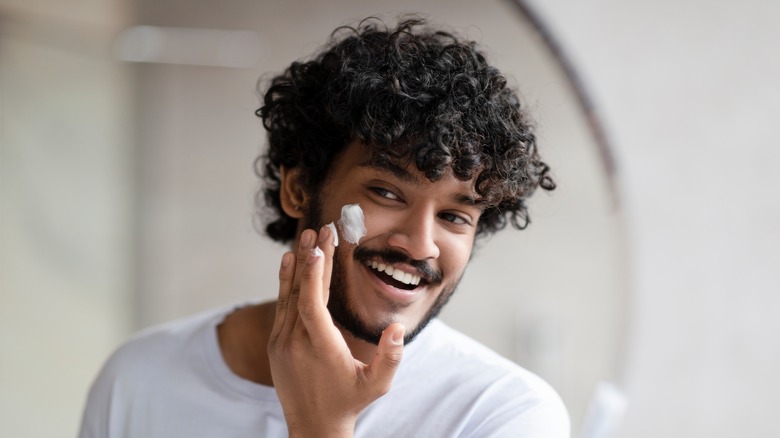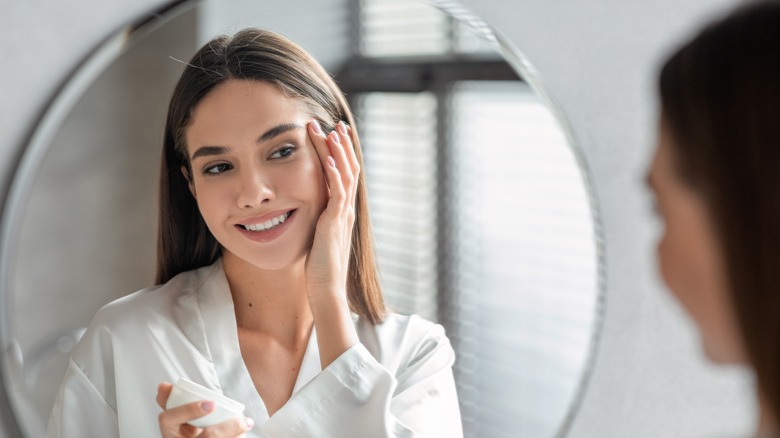12 Ways To Help Even Out Your Skin Tone
Are you constantly in a battle to keep your skin tone looking smooth and even? You are not alone. Uneven skin tone affects all skin types and is one of the most common skin concerns. It includes areas that are lighter or darker and areas of redness. There are a variety of factors that can lead to the appearance of an uneven skin tone, like sun damage, acne, and scarring or irritation, to name a few.
Certain skin conditions cause an uneven skin tone. Melasma is caused by a shift in hormones and is a type of skin condition more common in women. It typically appears as areas of discoloration that are darker than the natural skin tone, mostly present on the forehead, nose, cheeks, and upper lip. Hyperpigmentation is another cause of uneven skin tone caused by an overproduction of melanin (natural pigments responsible for giving the skin its color), which can show up as dark spots or patches, often from acne, sun damage, or aging. And scarring can also result in an uneven skin tone and dark spots as the skin heals.
There are several ways to help even out your skin tone. It's best to start by identifying what is causing your skin tone to look uneven, then move on to discover which skincare ingredients and treatment methods may work for you.
Protect your skin from UV damage
Using sunscreen daily is vital in maintaining an even skin tone and preventing the appearance of discoloration. Because sun damage is a leading cause of uneven skin tone and hyperpigmentation, according to research from Yale Medicine, applying daily UV protection will help to keep your skin tone even.
When choosing a sunscreen, an SPF of at least 30 is recommended by MD Anderson Cancer Center, as it blocks about 97% of UVB rays, the rays that reach the uppermost layers of skin and cause sunburn, skin cell damage, and skin discoloration. The two types of sunscreens are mineral and chemical. Mineral sunscreens contain zinc oxide or titanium dioxide, which physically block UV rays and keep them from reaching deeper layers of skin. Chemical sunscreens absorb UV rays and should be applied 30 minutes before heading out into the sun. For help in choosing which type of sunscreen is right for you, check out our guide on mineral versus chemical sunscreens.
For effective UV protection, be sure to apply your sunscreen generously and evenly to all exposed areas of skin, and reapply every two hours or more frequently if swimming or sweating. In addition to applying sunscreen, wear a hat and stay in the shade as much as possible to help protect your skin from sun damage and prevent discoloration. It's best to seek shade during peak sun hours, which are 10 a.m. to 4 p.m., to further reduce UV exposure.
Be careful not to irritate or injure your skin
Scarring from acne can cause discoloration of the skin. Inflammation from acne makes the skin produce more melanin, which can lead to dark spots and patches of hyperpigmentation, especially in people with darker skin tones, as they are more prone to discoloration.
Dealing with breakouts gently will help to prevent acne scarring and hyperpigmentation. Avoid aggressive scrubbing or picking at blemishes to keep from causing irritation and damage to the skin, and try using a scar treatment made with lightening ingredients to visibly fade discoloration — more on those in a sec.
Skin irritation is another cause of uneven skin tone. Harsh chemicals, fragrances, or abrasive scrubs can damage the skin's natural barrier and lead to inflammation and redness that can result in hyperpigmentation or dark spots. To prevent skin irritation, it's important to use gentle products and avoid harsh ingredients, which will help prevent uneven skin tone and maintain healthy, glowing skin.
Cleanse gently
Cleansing and exfoliation are key steps in achieving an even skin tone. As you've seen, skin irritation and inflammation can lead to the appearance of an uneven skin tone. And one common cause of irritation is over-cleansing or using the wrong cleanser for your skin. If your skin tends to have redness that leads to hyperpigmentation, your cleansing regimen could be the culprit.
Always use a mild cleanser that is formulated for your skin type and concerns, and avoid harsh sulfates and synthetic fragrances as well as products made with alcohol, as it can be drying and irritating to some skin types. And be sure to rinse well with lukewarm water after cleansing, as overly hot water can also dry and irritate skin.
Another area of concern when it comes to cleansing skin with an uneven skin tone is how you exfoliate. While sloughing away dead skin cells can help to even the skin tone, you don't want to use abrasive scrubs that can damage the skin's natural barrier and lead to inflammation and redness, resulting in hyperpigmentation or dark spots. Opt for gentler exfoliators, like those made with rice or oat powder, instead. When looking for ways to help even out your skin tone, only cleanse the skin when necessary — to remove dirt, excess oils, or makeup. As for exfoliation, stick to no more than once or twice weekly.
Try a vitamin C serum
Vitamin C is a powerful antioxidant that works to even out your skin tone by inhibiting the production of melanin and reducing the appearance of dark spots and hyperpigmentation, according to research published by Harvard Medical School. So, naturally, a vitamin C serum is an essential part of your beauty routine.
Luckily, there are several types of vitamin C serums to choose from. Most serums that include the ingredient will provide that information on the label. But when in doubt, look for L-ascorbic acid on ingredient listings. This is an effective and widely-used water-soluble form of vitamin C easily absorbed by the skin. Vitamin C is a potent ingredient, so it's wise to start off with a serum that contains a lower concentration of vitamin C (the range is typically between 1% and 20%) and gradually increase if you choose. Perform a patch test before using a new vitamin C serum by applying the product to a small area of your neck to see how your skin reacts.
Because vitamin C can reduce melanin in the skin, it makes discoloration appear lighter and brightens the skin overall. To use, apply your serum of choice to clean skin and massage it in, allowing it to absorb before performing further skincare steps.
Invest in a retinoid cream
Retinoid creams contain a derivative of vitamin A and are used to treat several skin conditions from acne and wrinkles to psoriasis and ... you guessed it ... uneven skin tone. You may have seen several types of retinoid creams available, including tretinoin, adapalene, and tazarotene. Tretinoin is commonly used to treat acne and, according to research published in the Journal of Drugs in Dermatology, is particularly effective in treating hyperpigmentation.
Similar to vitamin C, retinoids inhibit the production of melanin in the skin, which helps to even out your skin tone and reduce the appearance of dark spots and hyperpigmentation. Retinoids also help to speed up the skin's natural exfoliation process, which removes dead skin cells to reveal brighter, smoother skin. And this ingredient reduces inflammation, which can lead to the appearance of dark spots and discoloration.
Because retinoid creams can make the skin more sensitive to sunlight, they are best used as a part of your nighttime skincare routine. Again, like your vitamin C serum, start with a cream that contains a lower concentration of retinoids, like a 0.1% retinoid concentration cream, and perform a patch test to ward off irritation or redness.
Apply a face mask with natural lighteners
Many natural ingredients can even out your skin tone. Alpha hydroxy acids (AHAs) and beta hydroxy acids (BHAs) — glycolic acid, lactic acid, and salicylic acid — visibly lighten dark spots and hyperpigmentation. These acids can cause skin irritation, so use cautiously.
Green tea is rich in antioxidants to reduce inflammation and protect against UV damage. Plus, it's been shown in research in the Indian Dermatology Online Journal to lighten dark spots and even skin tone. It's mild and generally well-tolerated by all skin types. Kiwi is rich in vitamin C, which helps brighten the skin and reduce the appearance of dark spots. Turmeric is high in anti-inflammatory properties that diminish signs of redness and even skin tone. It also contains curcumin, which visibly diminishes dark spots and discoloration. Licorice root contains a compound called glabridin, which research in the Journal of Clinical and Aesthetic Dermatology has shown to lighten dark spots and hyperpigmentation. It also has anti-inflammatory properties. And bearberry contains arbutin, a compound shown in research published in the journal Antioxidants to lighten and brighten an uneven skin tone. Bearberry is also antioxidant-rich, which protects against the damaging effects of UV rays.
Make your own skin-lightening face masks by mixing any of these natural ingredients with a carrier ingredient, like honey, yogurt, or coconut oil. Apply it to your face for 5-15 minutes, depending on your skin's sensitivity. Perform a patch test before using to see how your skin will react.
Use a moisturizer with niacinamide
A form of vitamin B3, niacinamide has the ability to reduce the appearance of discoloration and even the skin tone, reduce redness, and visibly diminish hyperpigmentation. This ingredient works to prevent melanin from rising to the skin's surface, as stated in research published in the British Journal of Dermatology, and has anti-inflammatory properties to reduce irritation in the skin.
There is a wide assortment of moisturizers that contain niacinamide as an active ingredient, including serums, lotions, and creams. While niacinamide moisturizers can be used safely both morning and night, it's always a good idea to start with a lower concentration when introducing a new active ingredient to your skincare routine. Niacinamide concentrations in facial moisturizers generally range from as low as 2% up to 10% and higher. For best results, apply a small amount of your niacinamide moisturizer to skin after cleansing, toning, and applying serum, and finish with sunscreen during the daytime.
Wondering which skin-lightening ingredients are safe to use together? You can feel free to use your vitamin C serum or your retinoid cream along with your niacinamide moisturizer. If you have especially sensitive skin, you may want to start with one product and add in your other products as your skin becomes used to them.
Add a color-correcting primer to your makeup kit
While you get your new even skin tone skincare routine set up, you might as well give your skin a little help with a color-correcting primer. These cosmetic products work by evening out the skin tone, masking imperfections, and reducing the appearance of redness and discoloration by neutralizing and balancing out undertones in your skin that are causing your complexion to look uneven.
Available in a variety of tones, choose a color-correcting primer that works best for you. For example, a primer with a green pigment neutralizes redness in the skin. Yellow primer diminishes blue and purple tones. And purple primer brightens the skin. If this all sounds like a lot, use our handy guide to select the best color-correcting primer for your needs.
To use a color-correcting primer, apply a small amount to the skin after applying your skincare but before applying foundation, focusing on areas of discoloration. Now, blend well with fingertips, a beauty sponge, or a makeup brush. Allow the primer to set before applying more makeup products.
Stay hydrated
Because the skin becomes dry and loses its elasticity when the body is dehydrated, uneven skin tone and dullness can be a result. Dehydration can also make skin more prone to acne outbreaks, which may increase the risk of scarring and dark spots. And all skin types are susceptible to these effects of dehydration, even oily skin types.
The daily recommended fluid intake for men and women varies depending on age, weight, degree of exercise, and climate. In general, it's advised that men consume at least 3.7 liters (125 ounces) of water each day and women consume at least 2.7 liters (91 ounces) daily.
You can get water into your diet through certain foods, too. Some foods with high water content are cucumbers, watermelon, strawberries, broccoli, spinach, grapefruit, tomatoes, bell peppers, cauliflower, and carrots. Adding these foods into your diet, along with plenty of water, will help to maintain a healthy level of hydration and promote a more even skin tone.
Eat foods that even the skin tone
Are you getting the right vitamins and minerals for an even skin tone? There are several that can keep your skin looking smooth and healthy. We know that vitamin C helps to even your skin tone when applied topically. But this vitamin also brightens the skin and visibly reduces dark spots and hyperpigmentation when consumed, and it promotes collagen production to improve the overall texture and tone of the skin. Foods high in vitamin C are citrus fruits, berries, kiwi, papaya, mango, pineapple, broccoli, Brussels sprouts, and bell peppers. Research published in the journal Nutrients showed an improvement in skin color with a higher vitamin C intake.
Vitamin A regulates cell growth and turnover and improves the skin's overall texture. Foods high in vitamin A include sweet potatoes, carrots, spinach, kale, and liver. And zinc is a mineral that reduces inflammation in the skin. Foods rich in zinc include oysters, beef, pork, chicken, beans, and nuts. Research published in the Journal of Drugs in Dermatology showed that supplementing with zinc improved the appearance of acne and reduced inflammation in the skin.
Get an appropriate amount of quality sleep
Getting enough quality sleep can positively impact the skin. During sleep, your body repairs damaged cells and produces new ones, which is highly important for the complexion, as skin cells regenerate faster at night than during the day. Research conducted by University Hospitals Case Medical Center found that poor sleep quality can accelerate signs of skin aging and lessen the skin's ability to repair itself overnight. A good reason to get your Zs.
It's recommended that adults get between seven and nine hours of sleep each night, based on individual needs. Getting enough sleep can help to reduce dark circles and puffiness under the eyes, as well as improve the overall texture and tone of the skin. When you don't get enough sleep, your body produces more cortisol, which can lead to inflammation and breakouts, which can cause discoloration in the long run.
Ensure that you're getting quality sleep by establishing a regular sleep routine. Go to bed and wake up at the same time each day, create a relaxing sleep environment by keeping your bedroom cool and dark, and avoid screens before bedtime, as well as caffeine, alcohol, and heavy meals.
Go to a professional
While there are several ways to deal with certain types of uneven skin tone at home — topical treatments, diet, and sleep — there are times when you might need to see a professional for ways to help even out your skin tone. For instance, those with melasma, severe acne, rosacea, and scarring can benefit from a dermatologist or aesthetician, as they can diagnose the underlying cause of your skin discoloration and recommend treatments that will work for you.
Some of the treatments a professional offers are chemical peels, laser therapy, microdermabrasion, and prescription topicals. Chemical peels involve applying a chemical solution that removes the outermost layer of skin to improve skin tone. Laser therapy targets areas of uneven pigmentation and stimulates collagen production for a smoother, more even complexion. Microdermabrasion involves the use of a tool to exfoliate the skin, revealing a bright, even-toned complexion. And prescription creams are sometimes used to fade discoloration and improve skin tone.
If you are experiencing uneven skin tone despite your best efforts, it may be a good idea to get professional help for your skin.


